Common questions from people of Asian descent, including people of Japanese, Korean, and Chinese origin, is how they can get an eyelid crease, or a double fold in their eyelid. These types of questions come up often because about half of people of Asian descent do not have an eyelid crease. The main reasons why people without an eyelid crease want a double eyelid fold is to make their eyes appear bigger, and brighter. I’ll discuss how an eyelid crease can be created with surgery for people who weren’t born with them; or want the creases they do have to appear deeper or more defined.
I’m well known for my work for both primary, and revision cosmetic eyelid surgeries, from treating under eye bags, and hooded eyes, as well as oculoplastic procedures like eyelid ptosis correction. I’m also known for eyelid surgery performed for specific ethnicities, such as working with patients with darker skin who are more prone to scarring, and for Asian double eyelid surgery, but with less postoperative swelling.
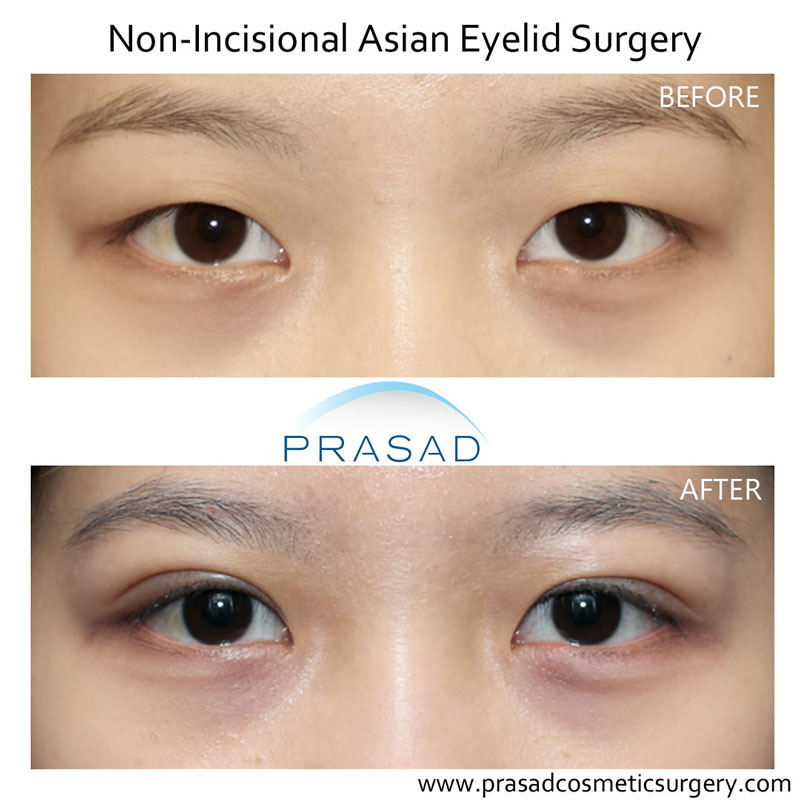
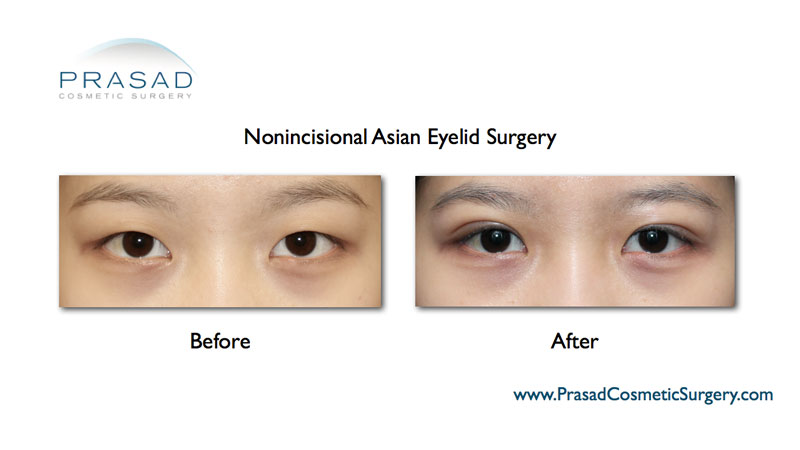
How are Eyelid Creases Formed?
The eyelid crease is formed with a natural connection between the muscle that lifts the upper eyelid called the levator muscle which connects to the eyelid skin with a fibrous connection. The point of this connection is where the eyelid folds when the eyes are open, forming the eyelid crease.
People without this skin-to-muscle connection don’t have an eyelid crease. People who have a weak skin-to-muscle connection may have a shallower crease, or multiple creases that are not well defined. In some people with a weak connection, a crease only appears some of the time, but is usually not defined or deep.
When someone doesn’t have a natural eyelid crease, it can be created surgically known as Asian eyelid surgery, Asian blepharoplasty, or double eyelid blepharoplasty. Double eyelid surgery creates the skin-to-muscle connection that was missing from birth by using sutures. A person’s individual anatomy still has the tendency to have created this crease naturally, even if they never had it.
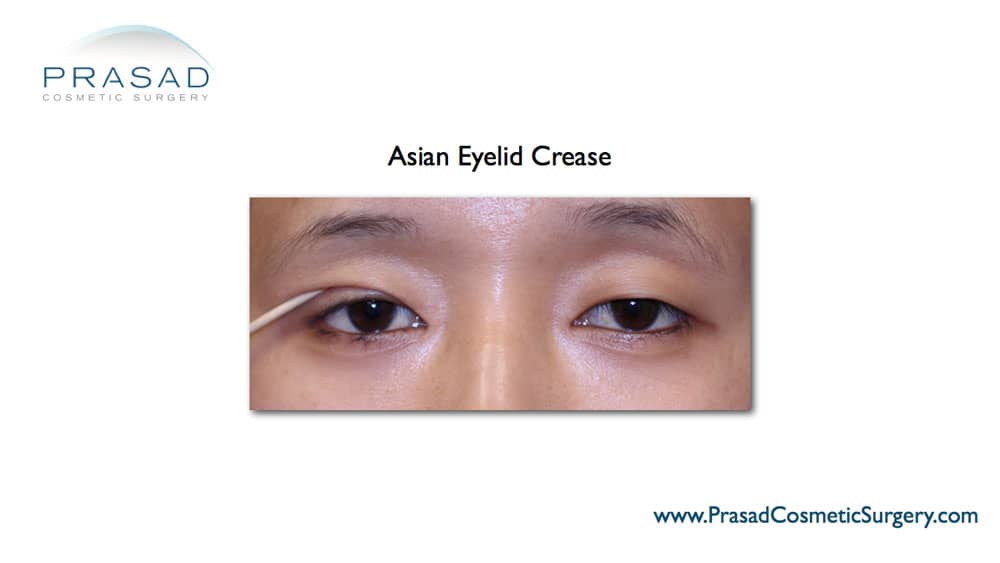
What I do to show my patients how their creases would have looked, and how their anatomy would allow it, is by pushing and rolling the upper eyelid skin back using a Q-tip or an instrument. This unveils what a natural crease would have looked like if someone was born with it, and a pretty close approximation of how it will look after surgery. A person’s anatomy also determines the shape of the crease, whether it runs parallel into the nose bridge, or tapers into the nose bridge. By using this technique during consultation, a patient can get a pretty good idea how their eyelids will look before any surgical incision is made.Surgery is the only way to create a stable, defined eyelid crease if there was none previously.
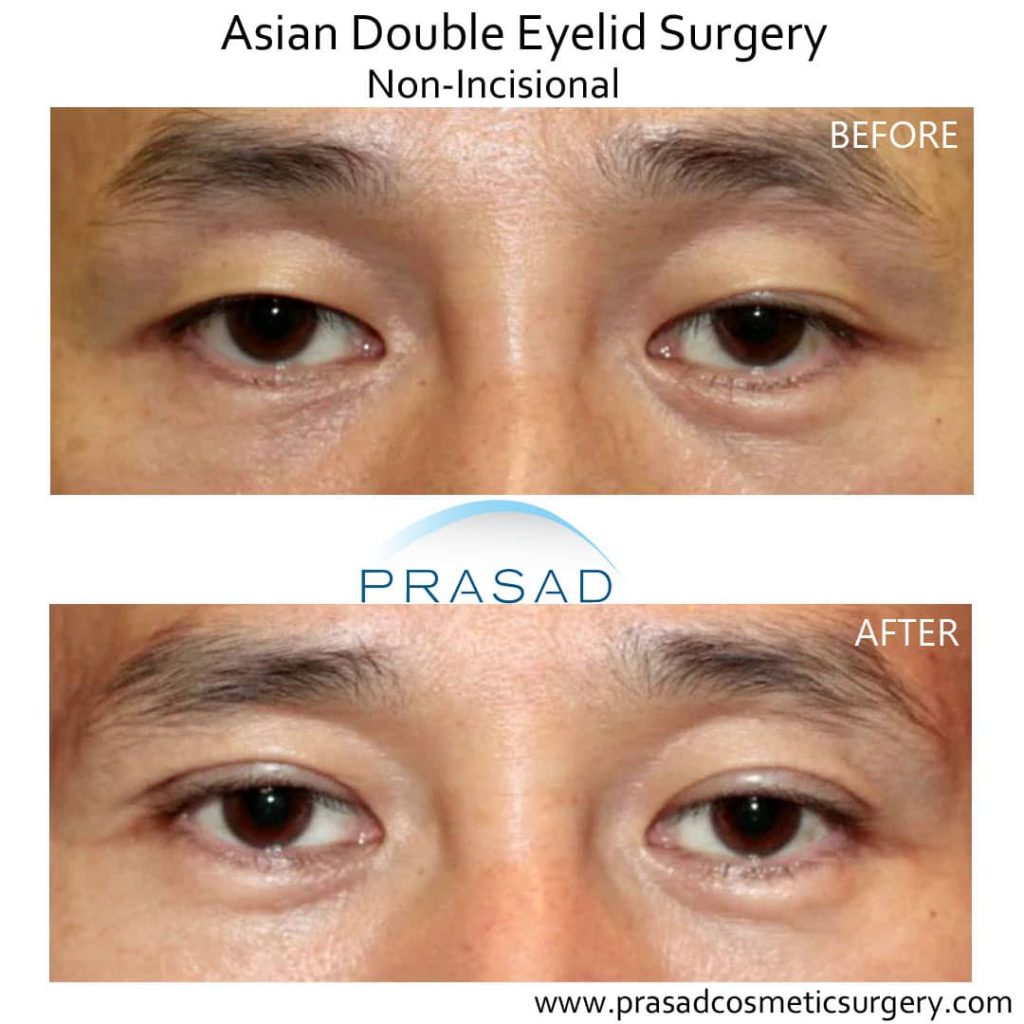
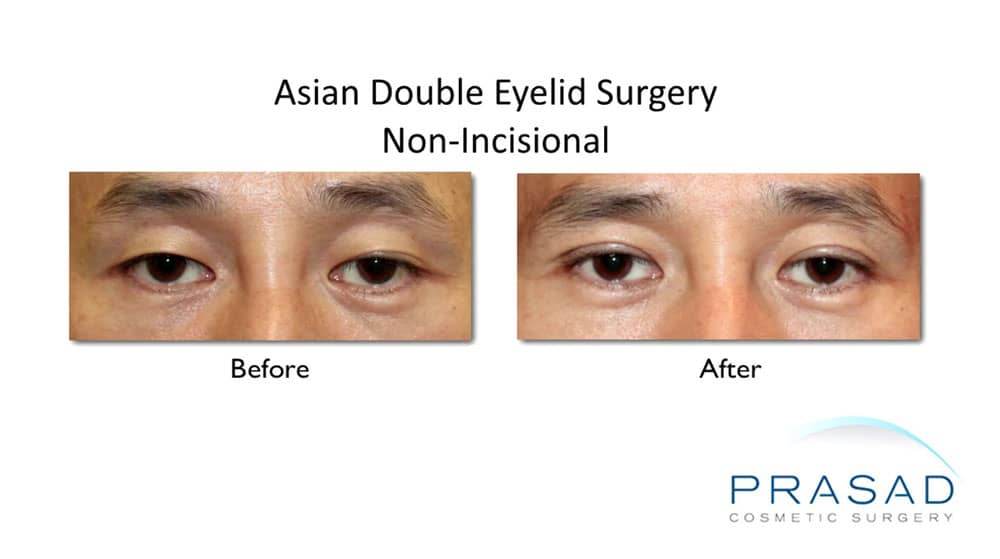
Can I Get an Eyelid Crease Without Surgery?
While non-surgical methods like taping or gluing the eyelids can temporarily give the appearance of an eyelid fold, this approach is temporary, probably not even lasting a day. The adhesives used can irritate eyelid skin, and the constant removal of tape or glue can stretch the eyelid skin, or even damage the levator muscle, which may require more extensive surgery, and more expensive surgery than cosmetic double eyelid surgery.
If a patient decides to go with double eyelid surgery, there are two main techniques in the approach: the non-incisional, and the incisional techniques. Patients can’t actually choose which technique to go with, as age and anatomy are the deciding factors.
Incisional Double Eyelid Surgery
If people have stretched or redundant eyelid skin, and fat behind the upper eyelid preventing a surgical connection between the skin and the muscle, then the incisional technique is used. This technique requires a careful assessment of stretched eyelid skin, followed by measurement of the amount of skin to be excised. Measuring eyelid skin for removal is important for any cosmetic eyelid procedure as a skin shortage can lead eyes unable to fully close or blink, which complicates natural tear film distribution, and proper sleep. Fat that is preventing the connection being made between the skin, the skin and the muscle are excised through the same incision. Sutures are used to close the incision, and to connect the eyelid skin to the levator muscle. The points where the sutures are passed through is where the eyelid folds, and the crease is created.
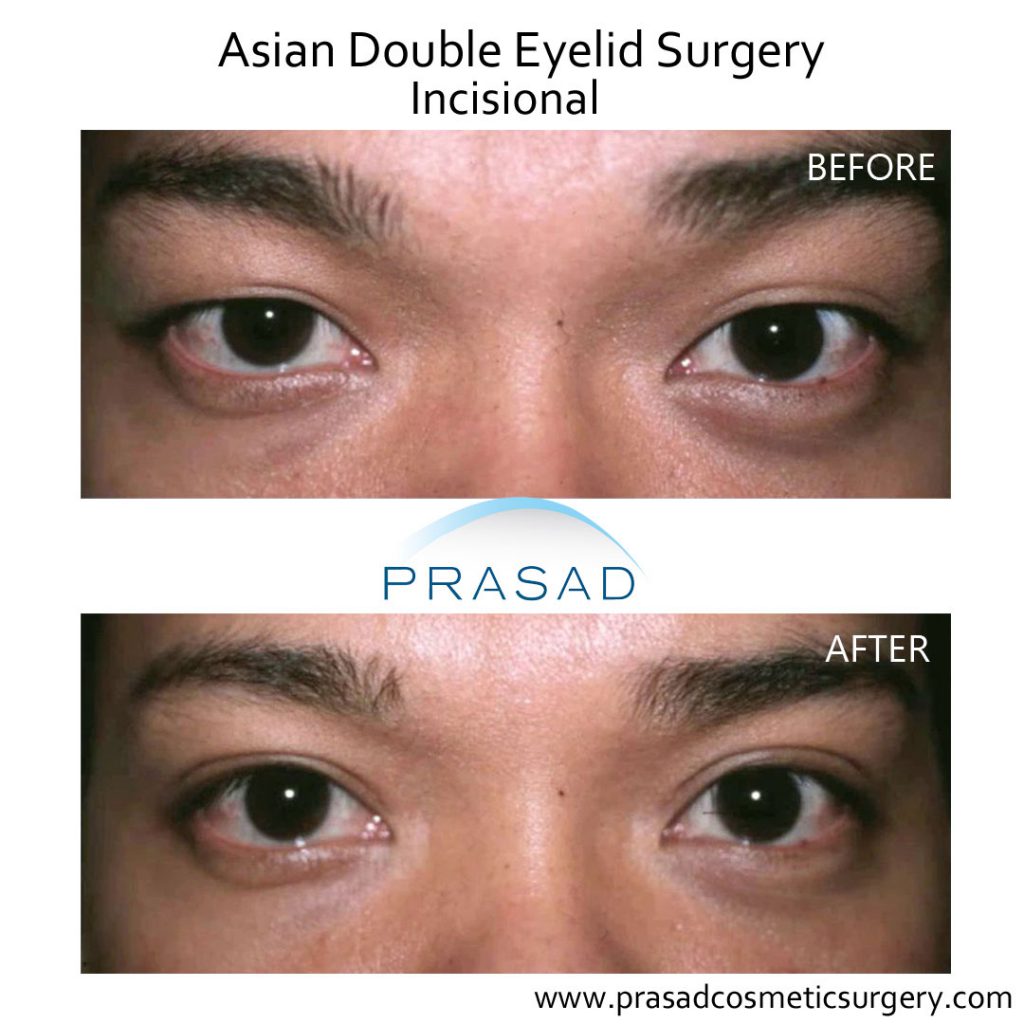
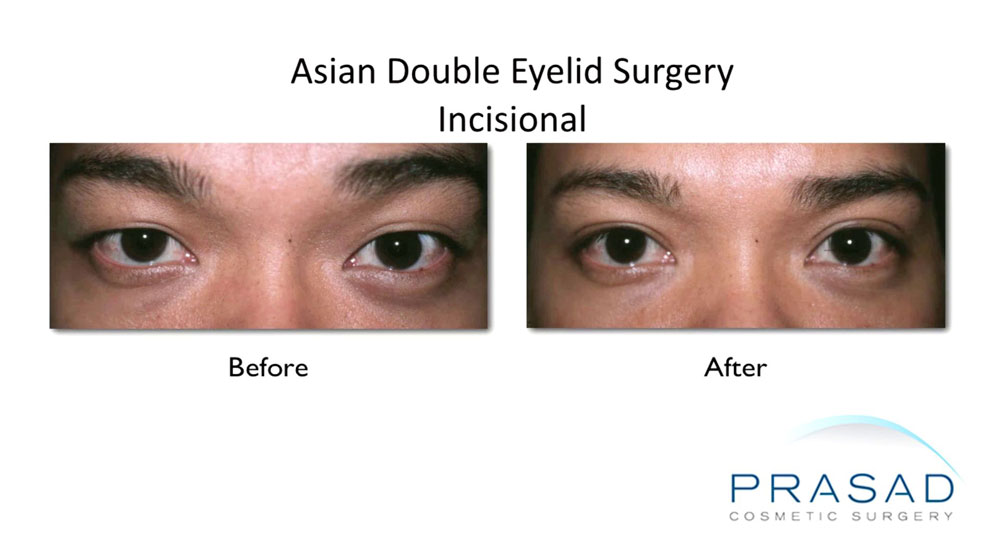
Non-incisional Double Eyelid Surgery NYC
The non-incisional technique is appropriate for younger patients who don’t have stretched eyelid skin, or excess fat behind the eyelids that would obstruct the surgical connection. It is called “non-incisional” because a long incision is not needed along the upper eyelid because no skin or fat are excised. However, small openings are made in the upper eyelid for the sutures to pass through. Just like the incisional technique, the point in the eyelids where the sutures pass through is where the skin folds, and the crease forms.
Whichever procedure is right for you, I would perform them with local anesthesia, with LITE IV sedation. This is more comfortable for patients as they are in a twilight state of consciousness, not feeling anything, but not completely paralyzed like general anesthesia. Use of local anesthesia also makes recovery easier on the patient, as they don’t need a week or more to recover from the effects of general anesthesia. Our patients go home the same day as surgery, and start surgical healing right away.
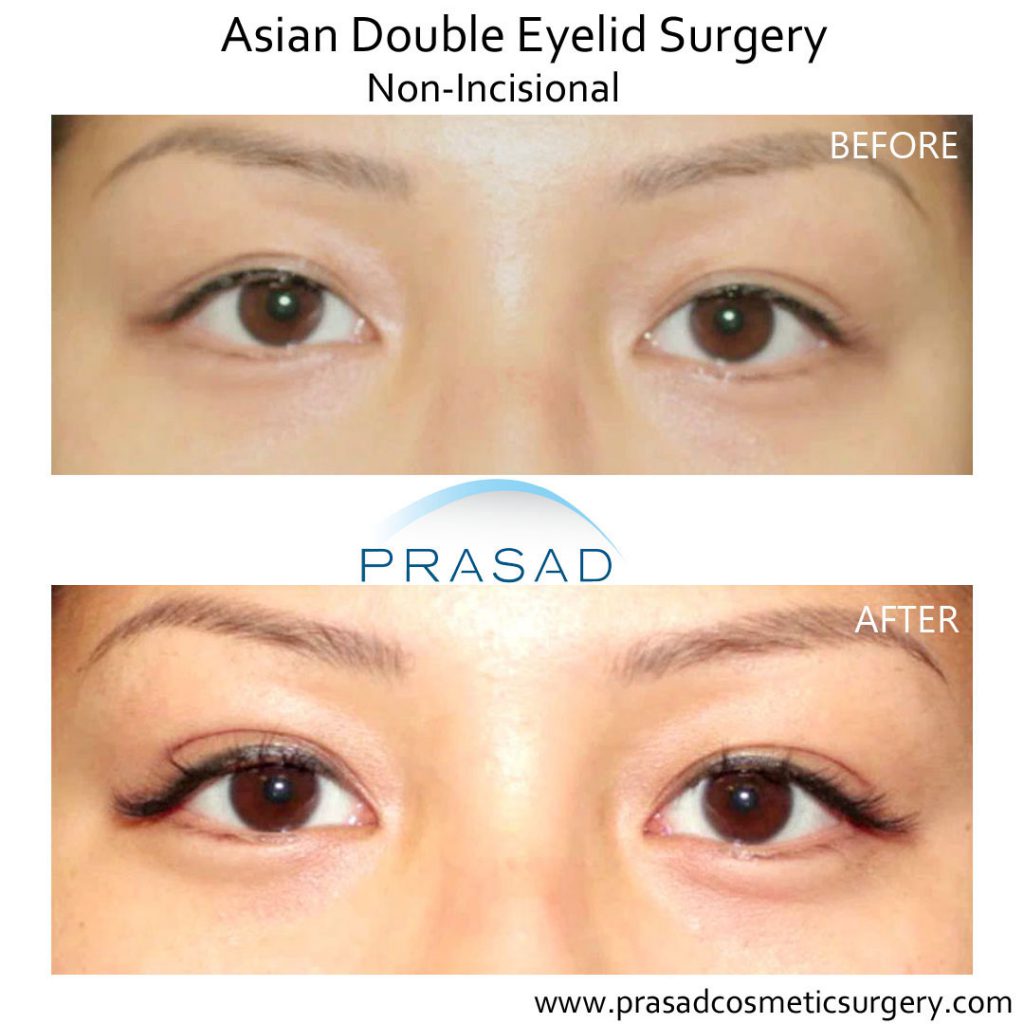
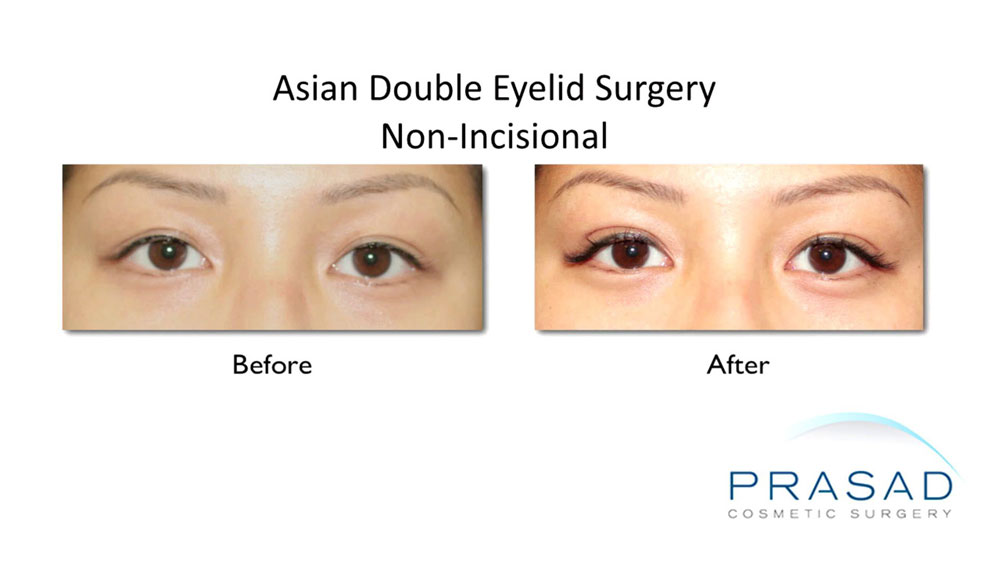
Double Eyelid Surgery Before and After
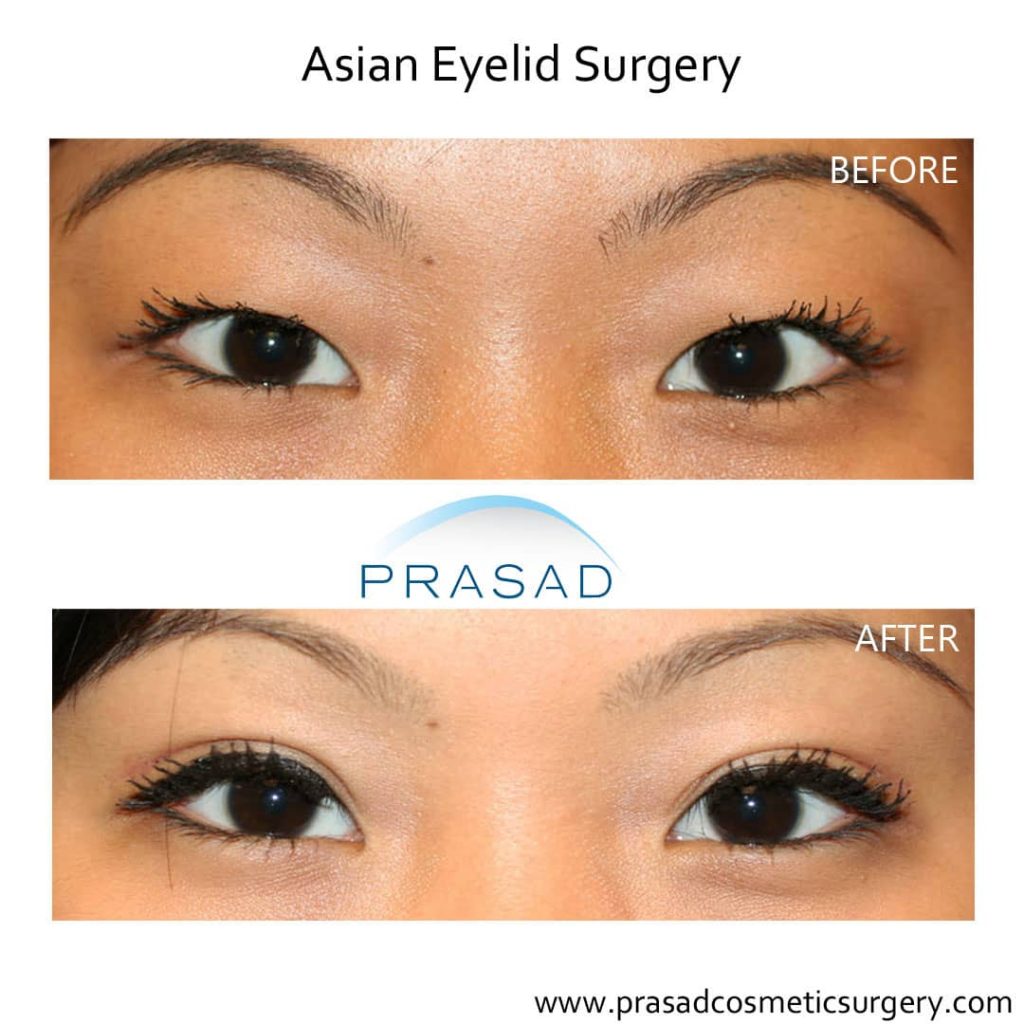
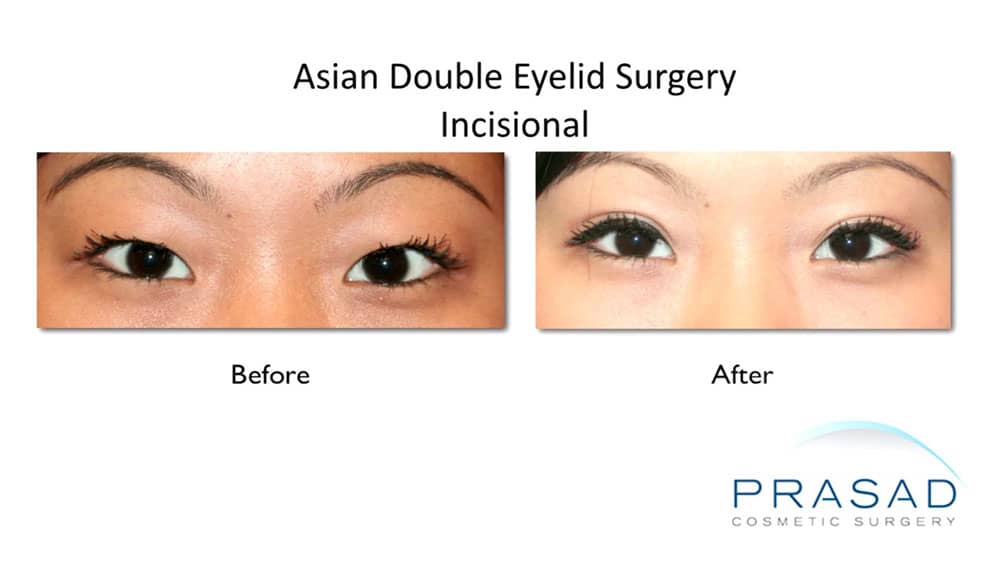
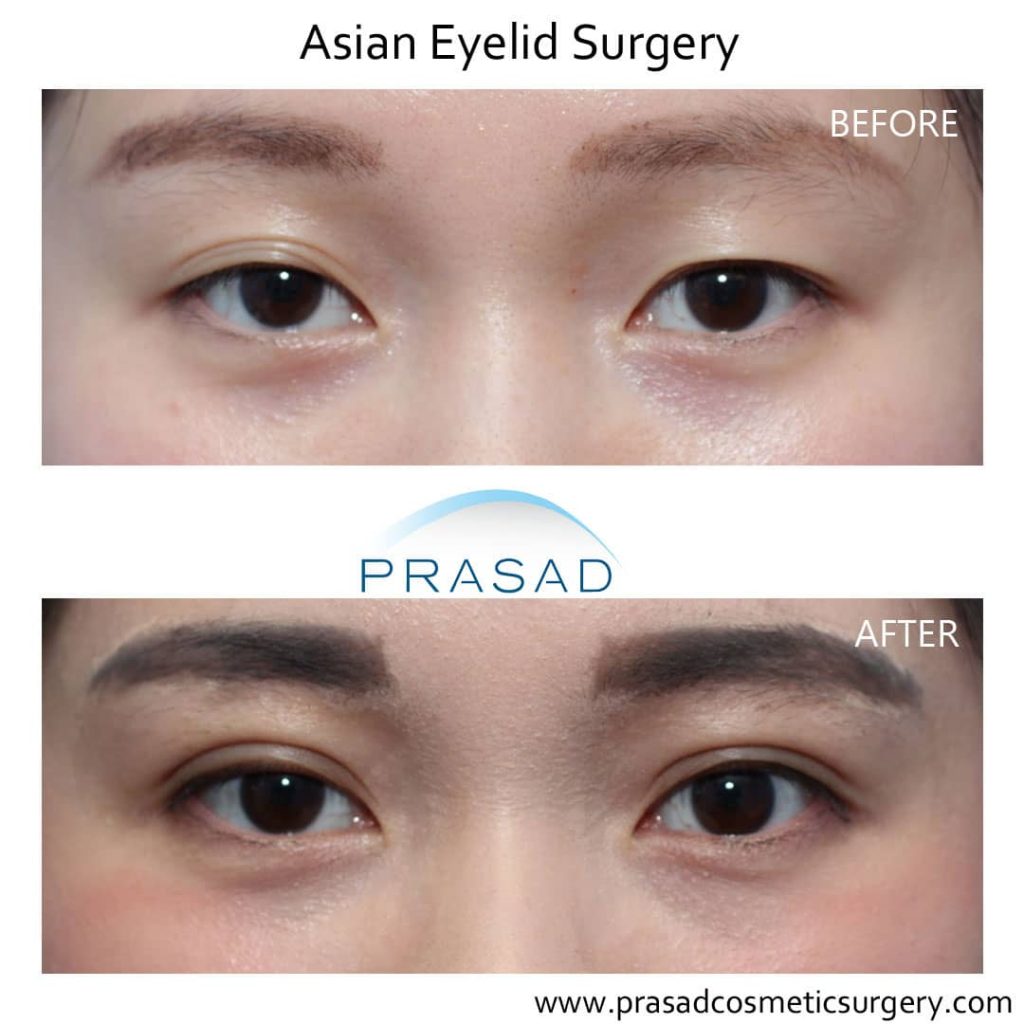
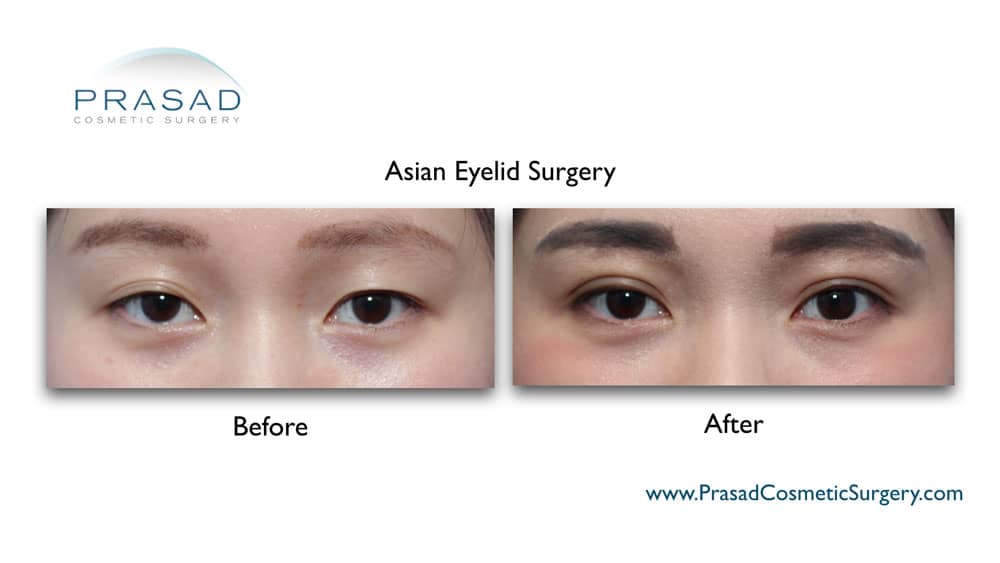
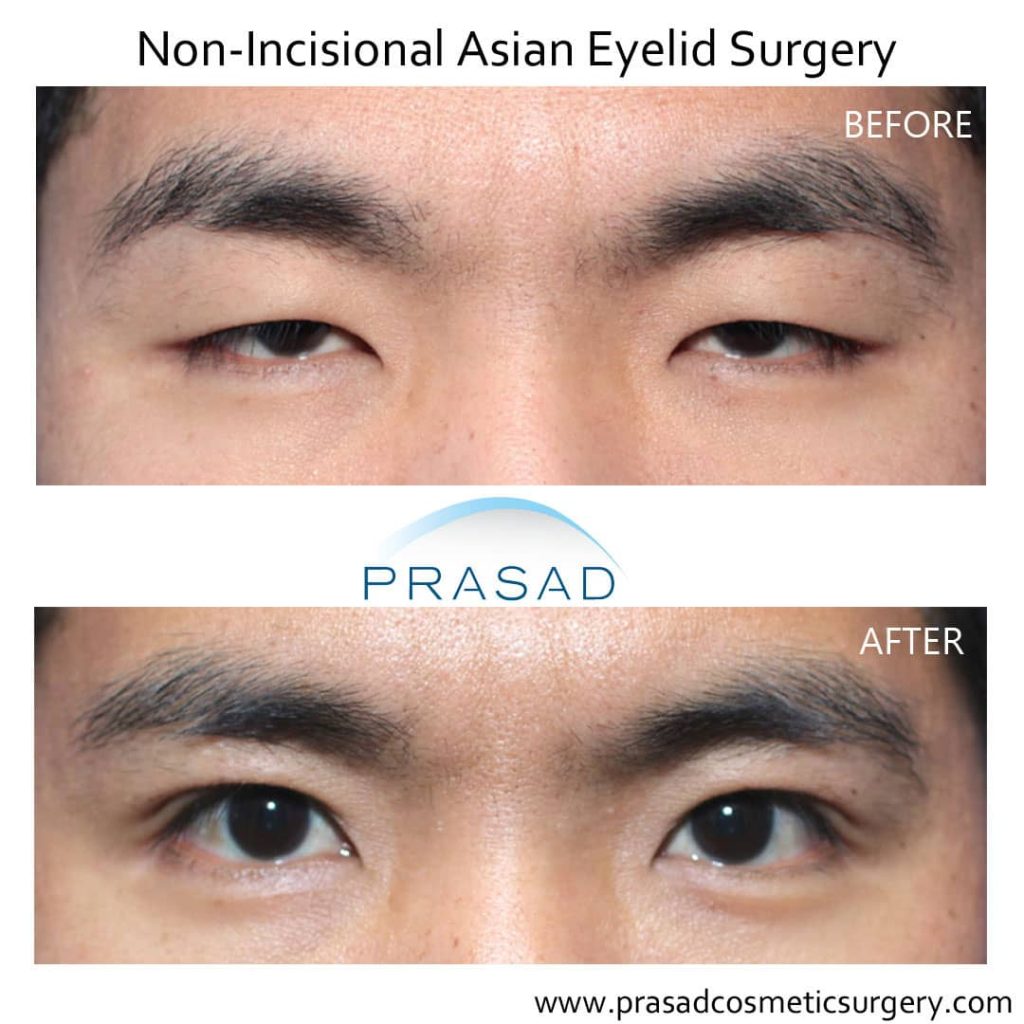
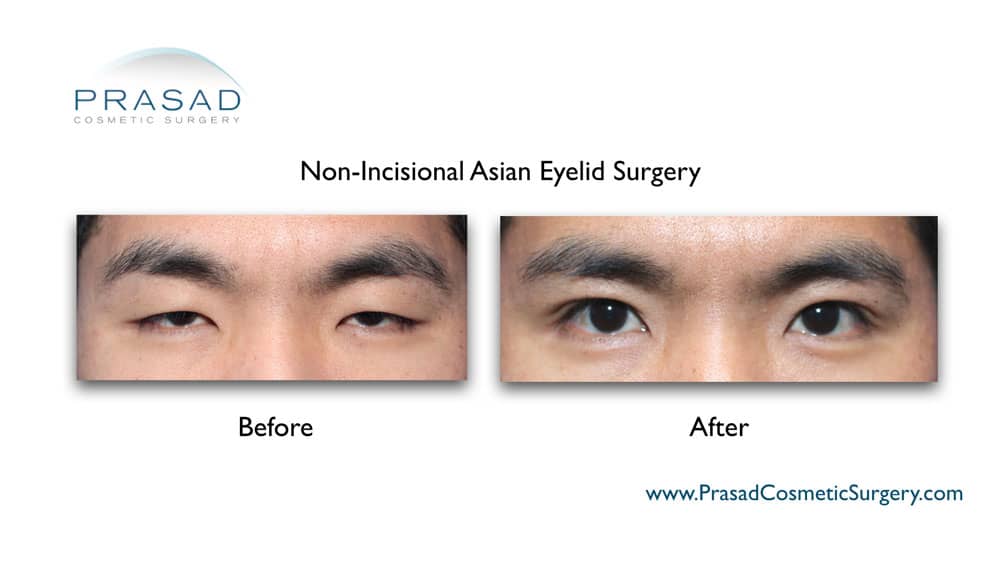
Double Eyelid Surgery Recovery
For double eyelid surgery, temporary swelling after surgery is a common complaint, as they make the eyelid margin appear wider, and the crease created higher than the patient expected. By following our surgical and aftercare protocols, our patients do experience less temporary swelling. I advise cold compresses to be applied on the suture areas immediately, and this continues at home for 20 minutes on, 20 minutes off while awake to reduce swelling. This is also done with antibiotic ointment on the sutures for the first 2 days only to prevent infection, but not past 2 days to avoid an allergic reaction or contact dermatitis.
After the first 2 days, warm compresses are used to help clear fluid to further reduce swelling. After the first 2 days, antibiotic ointment is replaced with a petrolatum-based ointment like Aquaphor to create a moist environment ideal for healing. For patients who had the incisional double eyelid procedure, external sutures to close the skin incision are removed about a week later, with internal sutures to create connection and the crease being left in.
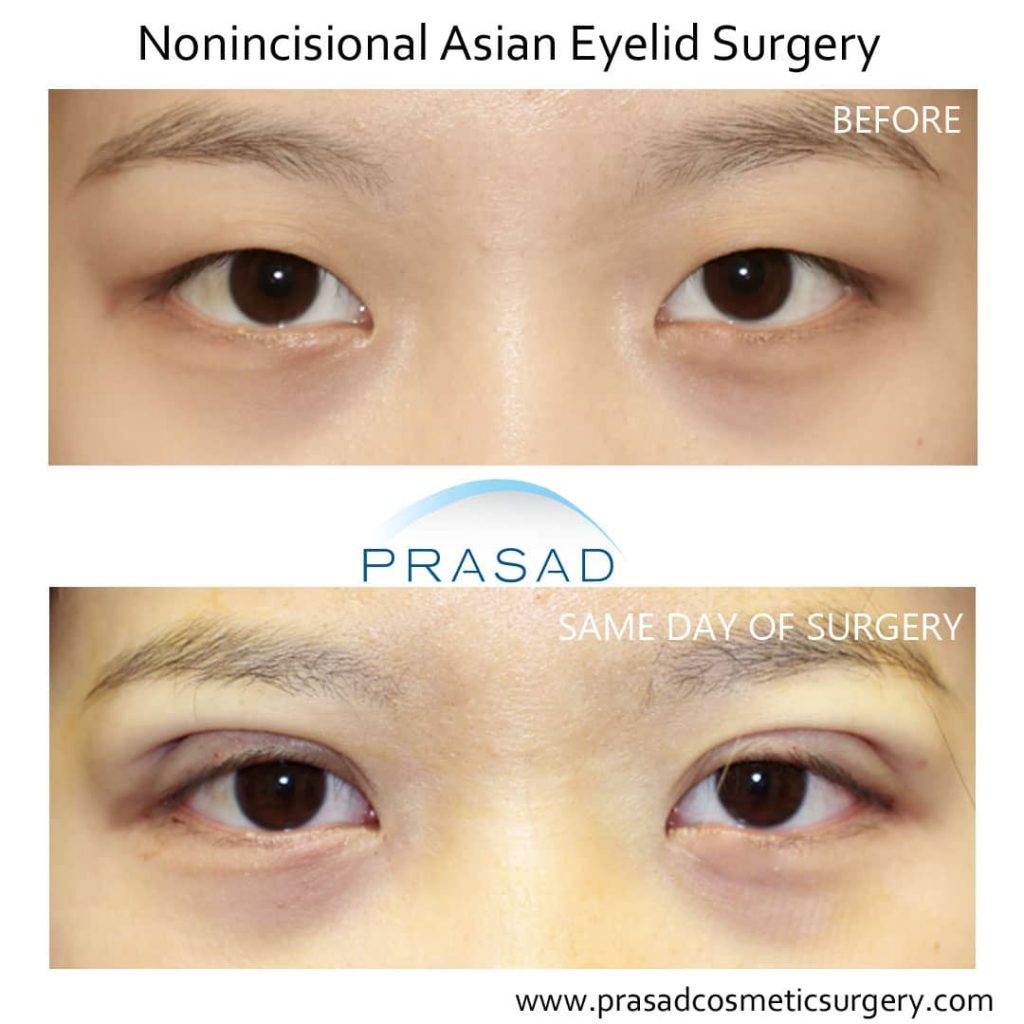
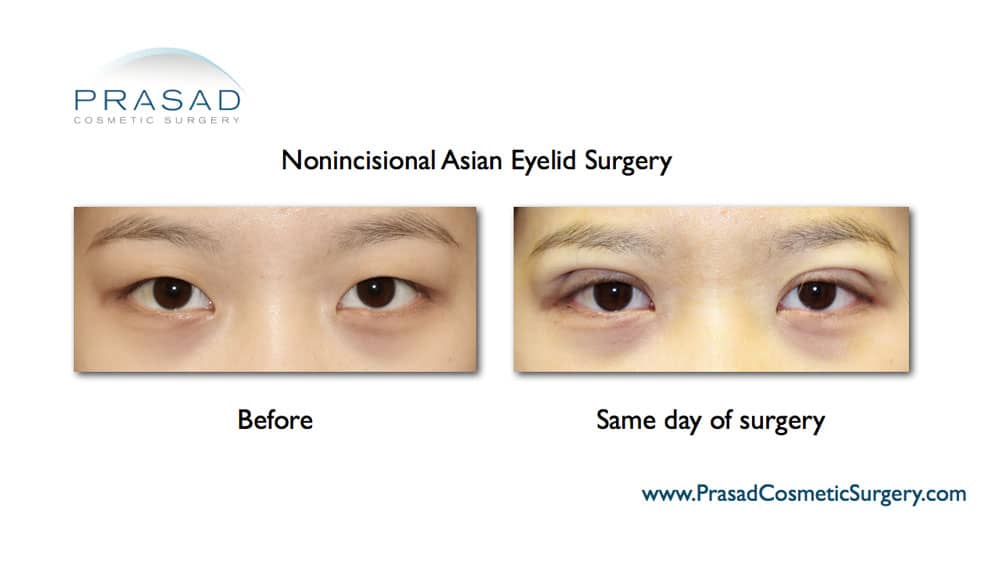
Non-incisional patients with no long external incision on the upper eyelid do not have their sutures removed, as internal sutures are needed to stabilize the surgical connection, and the created crease. While many patients have most of their swelling resolved soon after the procedure, for some most swelling dissipates after the first month when collagen fibers start to flatten. Healing further resolves after the first month, with most patients looking pretty close to their final results after 3 months. Full surgical healing takes about a year.
